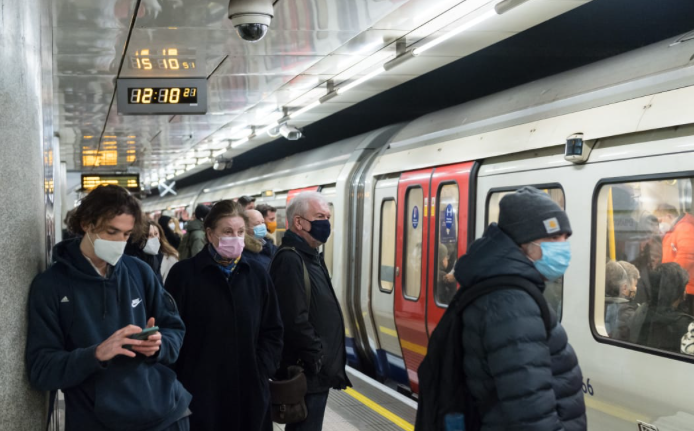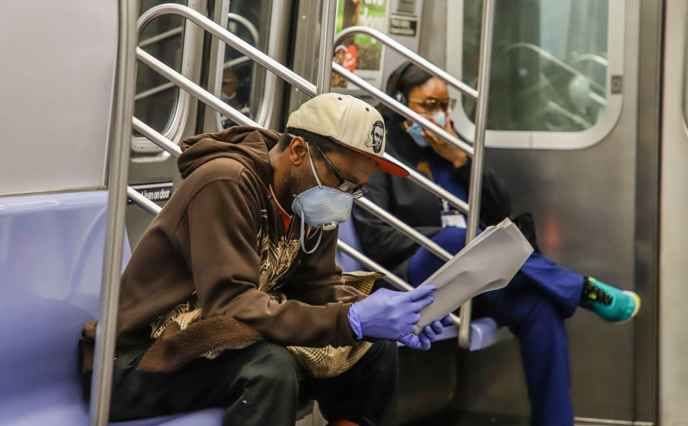Mask mandates: How have other countries fared after dropping requirements?
RNZ
12 September 2022, 9:30 PM
 PHOTO: RNZ / Mabel Muller
PHOTO: RNZ / Mabel MullerWith countries around the world dropping mask mandates as the pandemic appears to enter a new phase, questions remain about what we can learn from countries who have already left masks behind. Here's what you need to know.
The government has announced the retirement of the Covid-19 traffic light systemfrom midnight 12 September and along with it the removal of almost all mask requirements.
Now, with New Zealand's mask mandates lifted in all public places aside from aged-care facilities and healthcare settings, we look at how other countries have moved away from masking - and what impact it has had.
When did other countries change or remove their mask mandates?
Yesterday, the Australian government brought an end to its mask mandate for both domestic and international flights as the country lines up an exit from pandemic restrictions.
However, most Australian states still mandate mask wearing on many other forms of public transport and travellers are still advised to consider wearing a face mask for their own safety on flights.
This follows the English government's decision to remove most Covid-19 restrictions, including those requiring people to wear masks in indoor spaces like shops and restaurants, in July 2021.
England's government said its decision was made to purposefully line up with the end of the school term and the increased ability to be outdoors in summer, to relieve pressure on its struggling health system.
However, after a new wave of Covid ripped through the UK, England's then prime minister Boris Johnson was forced to reintroduce compulsory mask wearing in shops and public transport in late November 2021 to curb the threat of the Omicron variant.
The country's mask mandate was once again dropped in January 2022 after health authorities judged the Omicron variant had passed its peak.
In June 2022, the US removed all requirements for Covid-19 testing for incoming air travellers just months after it ditched mask mandates for all public transport.
Scotland became the last country in the United Kingdom to remove mask mandates in mid-April 2022, replacing the rules with guidance which recommended its citizens continue wearing masks indoors.
France also removed all public transport mask mandates in May 2022, however, less than a month later its health minister was calling for the mandate to be reinstated and asking the public to start wearing masks again in crowded areas.

Commuters wearing face masks travel on the London Underground. PHOTO: AFP or licensors
Why are countries and states removing restrictions?
Last week, the US state of New York brought an end to its 28-month-long mask mandate for public transport with Governor Kathy Hochul saying she hoped it would "restore some normalcy" amid falling infection and hospitalisation rates.
In April this year, the Biden administration lost its ability to enforce mask mandates on public transport in many states after a federal judge in Florida ruled it to be unlawful.
When France removed its requirement for mask wearing on public transport, its health minister conceded the mandate could no longer be deemed "appropriate" as the country experienced a drop in case numbers.
The UK's former prime minister, Boris Johnson, attributed his government's initial drop of mask mandates in July 2021, along with other restrictions, to the need to minimalise the "heavy toll" they placed on the economy, society and people's mental wellbeing.
Following the reinstatement of mask mandates and the subsequent dropping of the rules again in January 2022, Johnson acknowledged the impact vaccine boosters and public adherence to guidelines had had on the trajectory of case numbers.
Meanwhile, Scottish first minister Nicola Sturgeon acknowledged the important role mask wearing played in reducing transmission of the virus, but accepted the country's infection rate had peaked and thus the legal requirement was no longer necessary.

New York metro passengers wearing face masks in the early stages of the Covid-19 pandemic in the USA. PHOTO: Brazil Photo Press / AFP
How have Covid-19 infection rates been affected by changes in restrictions?
After the UK dropped almost all restrictions on 19 July 2021, England's Covid-19 infection rate experienced a gradual but concerning increase from a seven-day rolling case average of just over 41,302 on 19 July 2021, rising to 145,642 on 7 January 2022.
This increase in infections was undoubtedly spurred on by the arrival of new coronavirus variants, such as Omicron.
After England's reinstatement of mask mandates to curb the new variant in November 2021, infections quickly rose from a seven-day average of 33,658 on 21 November to a peak of 147,195 on 6 January.
By 27 January, the day that mask mandates were once again dropped, the seven-day case average had dropped to 77,260 but what followed was a sharp increase in infections and by 3 February the seven-day average had jumped to 184,158.
Scotland removed its mask mandates on 18 April with the seven-day case average sat at 2166, following this the country experienced a short but sharp surge with the case average jumping up to 5540 on 25 April. Since this jump in infections, Scotland's infection rate has remained on a steady decline over the following months.
Meanwhile in the US, case numbers saw a steady increase in the months following the removal of mask mandates on public transport.
The US' seven-day Covid-19 case average rose from 41,610 on 19 April 2022 to a peak of 133,678 on 11 July 2022.
Since the July peak, statistics have shown a progressive decrease in case numbers with the seven-day case average now sitting at just over 65,000 as of 10 September 2022, according to New York Times statistics.
The French government's removal of mask mandates in May 2022 also aligned with an upward trend in infections. As of 17 May, a day after mask mandates were dropped, the seven-day case average was 28,535. Nearly two months later, this average had risen to 127,737 on 8 July.
Across the ditch in Australia, it is not yet clear whether case numbers will follow a similar trend to that of the US, the UK or France.



